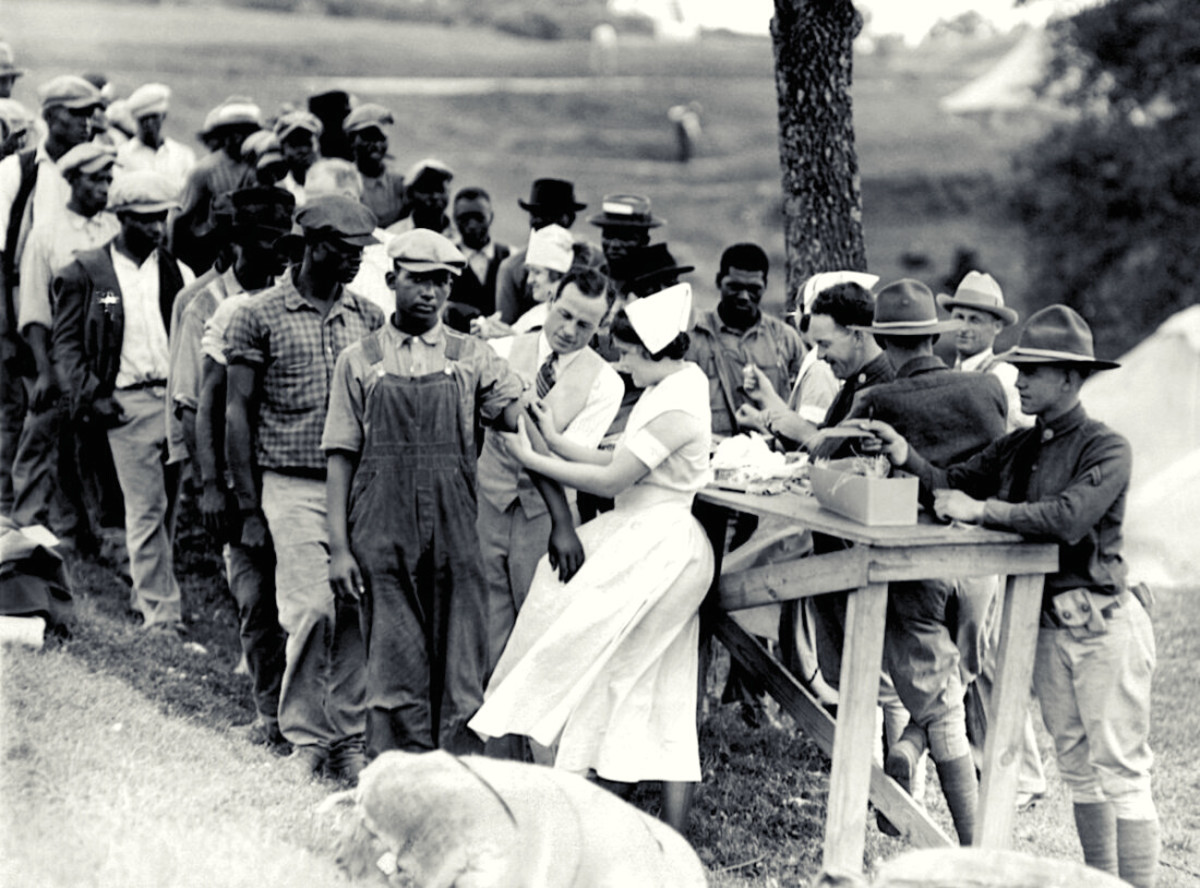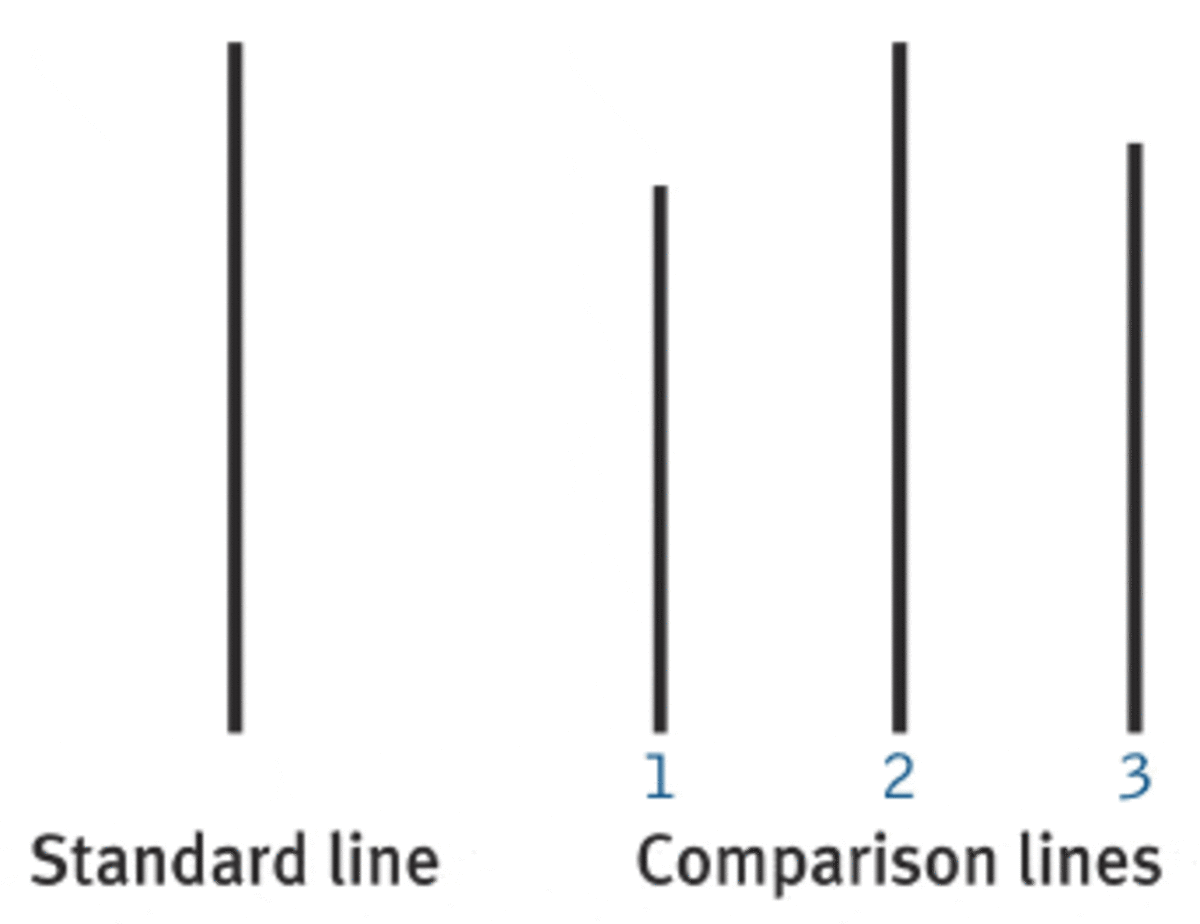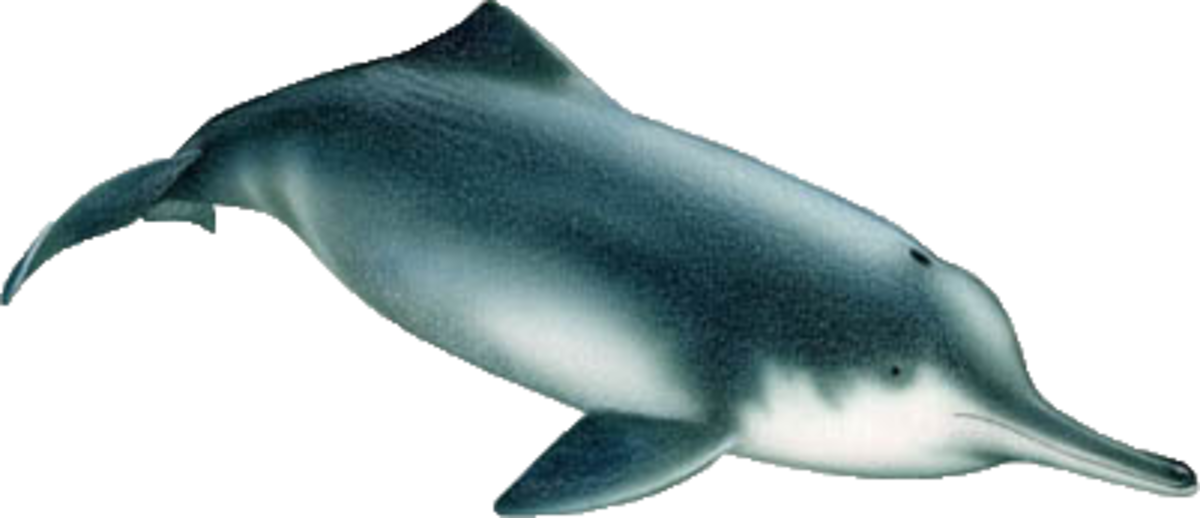Ten Ethically Questionable Experiments
Learn more about these experiments...
Tuskegee Syphilis Experiment
The Tuskegee Syphilis Experiment was a clinical study that was conducted by the U.S. Public Health Service between the years of 1932 to 1972. The purpose of the study was to study the natural progression of untreated syphilis in African American men. In return for participating in the study, these men received free healthcare, meals, and burial insurance.
But, this is where the experiment got unethical. The men never knew they had syphilis. Also, even though in 1947 the discovery of penicillin as a cure for syphilis was known, the men were never given penicillin. Their syphilis went untreated. This study went on until 1972 when it leaked into the press. By the end of the study, of the 399 men that had started the study, only 74 were alive. The rest had died for various reasons.
Little Albert Experiments
Little Albert
The Little Albert experiment was a psychology experiment conducted by John B. Watson and Rosalie Raynor. The experiment was to prove that emotional reactions could be conditioned in people. The test subject? A nine month old referred to as “Albert B”.
Albert was exposed to a series of stimuli. These ranged from animals such as white rats, monkeys, and rabbits, to other items like a rabbit mask and burning newspaper. The second time around, Albert was shown the white rat accompanied with the sound of a hammer hitting a metal pipe. This resulted in Albert crying, startled by the loud noise. This continued to condition Albert.
What was concluded from the experiment was Albert was ultimately not only afraid of the white rat, he was also afraid of things that resembled the white rat such as a furry lab coat or a white beard.
Stanford Prison Experiment Footage
Stanford Prison Experiment
The Stanford Prison Experiment was an experiment conducted at Stanford University by Philip Zimbardo and his team of researchers. This experiment was funded by the US Office of Naval Research in hopes of discovering the causes of conflict between military guards and their prisoners. This experiment took place between August 14-20 of 1971.
The experiment involved 24 male students who were randomly selected to play the role of prison guard or prisoner and Zimbardo who took the role of superintendent of the ‘prison’. Each person, whether guard or prisoner, were given the appropriate garb including ill-fitting socks for the prisoners, and batons and mirrored sunglasses for the guards.
Ultimately, the guards and prisoners took to their roles. The guards used psychological torture against the prisoners and the prisoners revolted. One prisoner even took to going on a hunger strike.
The experiment, which was supposed to last for two weeks, only lasted six days due to his girlfriend, Christina Maslach, objecting to the conditions of their makeshift prison.
Learned Helplessness
Learned Helplessness was an experiment conducted by Martin Seligman in 1967. The experiment involved three groups of dogs that were placed on harnesses. The first group was put on the harnesses and after a time, were released. In group two, one dog was given shocks that could be stopped by pressing a lever. The third group though, received shocks at random and could not be stopped.
The second part of the experiment involved a box that gave dogs electrical shocks. These shocks could be stopped if the dog in question simply jumped out of the box. When dogs from group three were placed in the box though, the dogs laid down and whined. They didn’t try to escape the box what-so-ever. It was said that the dogs from group three developed clinical depression.
Milgram Study
The Milgram Experiment was conducted by Stanley Milgram to study the willingness to obey authority figures. He did this by testing their personal conscience. This study began in July 1961.
The experiment involved the learner (who was a pretend volunteer), a teacher (the real volunteer), and the authority figure (the person running the experiment). The teacher and learner were separated into two rooms. The experiment consisted of the teacher reciting word pairs and listing four possible answers. If the learner got the answer wrong, he would receive a shock. Before the experiment started, the teacher was given a shock that the learner would supposedly get. The teacher was told for every answer the learner got wrong, the strength of the shock would go up 15-volts.
While the teacher thought that they were actually administering shocks to the learner, the learner, in fact, wasn’t getting any shocks at all. Eventually, the learner would bang on the wall insisting the experiment stop. If the teacher wanted to stop, the experimenter expressed his authority, making it sound like he had to continue. The experiment only ended for the teacher if they wished to stop after four verbal prods by the experimenter or if they gave the maximum 450-volt shock three times in a row.
David Reimer
David Reimer was born in Canada and, after being diagnosed with phimosis, received a circumcision at 7 months old. He received his circumcision on April 27, 1966 but the circumcision didn’t go as planned which resulted in his penis being burned beyond repair. His parents being concerned about his future, decided with the help of John Money to perform sex reassignment surgery on Reimer, turning him into a girl. He underwent surgery at 22 months.
John Money had an ulterior motive for convincing Reimer’s parents to go with reassignment surgery. Money was convinced that gender identity depended on nurture instead of nature. Reimer became his test subject for this and he forced the now Brenda and her twin to perform sexual acts to prove his theory.
Reimer was given hormone pills and urinated through a hole that surgeons placed in her abdomen. This continued until Reimer was at the age of 13 when her parents told her of her real identity. When Reimer was 14, he had stopped taking hormone pills and assumed a male gender identity.

The Pit of Despair
The pit of despair was the ‘affectionate’ name of Harry Harlow’s vertical chamber apparatus. Harlow’s career was involved with studying maternal bonding. In the 1970s, Harlow had used this pit of despair to study rhesus macaque monkeys. After these infant monkeys bonded with their mothers, Harlow separated them and placed the infants in the chamber. He then studied them.
After a year in this chamber, the monkeys barely moved or played. They were outcasts in the monkey world and bullied when placed with other monkeys.
Harlow and his team were heavily criticized in the science world. They were said to be inhumane.

Stateville Penitentiary Malaria Study
The Stateville Penitentiary Malaria Study was a study to see the effects of malaria. This took place in Stateville Penitentiary in the 1940s and was conducted by the Department of Medicine at the University of Chicago along with the United States Army and the State Department.
The volunteers of this study were inmates at the penitentiary. Altogether, there were 441 inmates that volunteered. Each volunteer received 10 bites from infected mosquitoes. One prisoner died from a heart attack after several rounds of a fever. The study went on for 29 years.
The Monster Study
The Monster Study was a study conducted by Wendell Johnson and Mary Tudor in 1939. Johnson chose 22 orphan children to do this study. He separated the orphans into two groups. The first group received positive speech therapy and negative speech therapy to the other half. The group receiving positive therapy were praised at their speech while the negative group got belittled for their speech imperfections and were called stutters.
The study was nicknamed Monster Study by Johnson’s peers since they couldn’t believe that he was conducting such a study on orphan children. The study went on from January until May of 1939.
The orphans who received negative therapy suffered negative psychological effects and some even developed speech problems.

Project MKUltra
Project MKUlta, also known as CIA’s mind control program, began in the early 1950s and didn’t officially stop until 1973. This program, used unaware U.S. and Canadian ctizens as their test subjects. The project manipulated their subject’s mental states and brain functions through ways of drugs, hypnosis, deprivation, isolation, abuse, and torture.
After Project MKUltra was brought to public light, an investigation of CIA activities was started. Soon after, Richard Helms, the director of the CIA at the time, ordered all files relating to MKUltra be destroyed in 1973.








